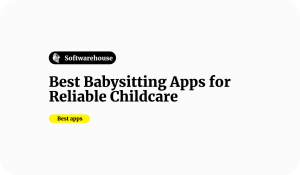We ask the industry leaders what are the most vital techniques and tools for building scalable web applications in 2024, and why? Here is what 8 thought leaders have to say.
- Implement Asynchronous Processing
- Adopt Microservices and Containerisation
- Microservices and Docker for Growth
- Strategic Approach with Cloud and CI/CD
- Microservices and Kubernetes for Efficiency
- Serverless Architecture for E-Commerce Scaling
- Modular Frameworks and Continuous Integration
- LaunchFast: Scalability with Right Tools
Implement Asynchronous Processing
Implementing asynchronous processing in web applications is the most reliable technique for building scalable apps in 2024. This technique enables different web app functions to occur concurrently without disrupting service or user experience.
To fully implement asynchronous processing, have message queues that handle asynchronous tasks and allow the application to process tasks in the background without blocking the main thread. This helps to improve performance in web apps that need to process a large number of tasks simultaneously.
Additionally, ensure event-driven architecture. Here, implement an approach where different web app components communicate through events to improve decoupling and stability. Event-driven architecture is vital for building scalable web applications as it allows different parts of the application to respond to changes and events independently. With this, developers can conveniently add or modify features without disrupting the entire system.

Clooney Wang, CEO, TrackingMore
Adopt Microservices and Containerisation
Building scalable web applications in 2024 involves leveraging a combination of modern techniques and tools to ensure high performance, reliability, and the ability to handle increased loads. Key strategies include adopting a microservices architecture to break down the application into smaller, independent services for better scalability and maintainability, and using containerisation with Docker and orchestration with Kubernetes to run applications consistently across environments and easily scale services.
Serverless computing platforms like AWS Lambda, Azure Functions, and Google Cloud Functions enable developers to run code without managing servers, allowing for automatic scalability and cost efficiency. Cloud-native development, utilising services from AWS, Azure, and Google Cloud for databases, storage, and networking, ensures better integration and infrastructure management.
Employing load balancers and auto-scaling groups helps distribute traffic evenly and adjust resources based on demand. Distributed databases like Google Cloud Spanner and Amazon Aurora support horisontal scaling, ensuring the data layer can handle large volumes of transactions. API gateways such as AWS API Gateway manage, secure, and scale APIs effectively, while message brokers like Apache Kafka and RabbitMQ enable asynchronous communication and improved fault tolerance.
Monitoring and observability tools like Prometheus, Grafana, and Elasticsearch provide real-time insights into application performance, allowing quick issue resolution. CI/CD pipelines using Jenkins or GitLab CI automate testing and deployment, maintaining rapid iteration cycles without compromising scalability. These techniques and tools collectively ensure that web applications in 2024 can efficiently handle large volumes of traffic, maintain high performance, and adapt to growing user demands.

Nikita Baksheev, Manager, Marketing, Ronas IT
Microservices and Docker for Growth
Utilising microservices architecture and containerisation tools like Docker is essential. These strategies have allowed us to build scalable applications that grow with user demand. Microservices enable independent scaling of components, while Docker ensures consistent deployment across environments. This combination reduces downtime, enhances flexibility, and supports seamless scaling, which is critical in today’s fast-paced digital landscape.

Dan Ponomarenko, CEO, Webvizio
Strategic Approach with Cloud and CI/CD
Building scalable web applications in 2024 demands a strategic approach. Microservices architecture is paramount, breaking down applications into independently deployable services for enhanced scalability and maintainability. Cloud platforms like AWS, GCP, or Azure offer essential infrastructure for auto-scaling resources based on demand. Containerisation using Docker or Kubernetes optimises resource utilisation and deployment efficiency.
Leverage serverless architecture for functions that don’t require constant uptime, reducing costs. Make performance optimisation a top priority by using methods like image compression, code minification, and caching. Processes for development and deployment are streamlined by continuous integration and continuous delivery, or CI/CD. Last but not least, effective resource allocation and performance bottleneck identification require strong monitoring and analytics technologies.

Fahad Khan, Digital Marketing Manager, Ubuy India
Microservices and Kubernetes for Efficiency
Microservices architecture remains crucial for building scalable web applications in 2024. This approach allows for independent scaling of application components, enhancing flexibility and resource efficiency.
Containerisation, particularly using Kubernetes, is essential for managing and orchestrating these microservices effectively. It ensures consistency across development and production environments while facilitating easy scaling and deployment.
Serverless computing continues to gain traction, offering automatic scaling and reducing operational overhead. It’s particularly valuable for handling unpredictable workloads efficiently.
Edge computing is becoming increasingly important, bringing computation closer to data sources and users. This reduces latency and improves performance, especially for global applications.
These techniques, combined with robust CI/CD pipelines, enable rapid iteration and scalability in today’s fast-paced digital landscape.

Yoyao Hsueh, Founder, Blustrat Digital
Serverless Architecture for E-Commerce Scaling
I rely on serverless architecture and modular front-end frameworks to build scalable web applications. Services like AWS Lambda allow us to handle traffic spikes without infrastructure concerns. We break up apps into small modules that scale individually.
For an e-commerce client, we built a serverless storefront with AWS Lambda and DynamoDB. Each part scales automatically, handling huge workloads. On the front-end, we use React to build reusable UI components. Each component is independent, so the interface scales by adding more.
Continuous integration and delivery are key. We use GitHub Actions to automatically test and deploy updates frequently without compromising quality. Frequent releases allow us to iterate quickly and build scalable software.
Using these techniques, we built the e-commerce site to handle high data volumes and scale to any traffic. The infrastructure expands and contracts as needed to meet demand.

Alexander Palmiere, Founder & CEO, Refresh Digital Strategy
Modular Frameworks and Continuous Integration
As someone who has built scalable web applications, I’ve found a few techniques critical:
Microservices architecture lets me scale components independently. I use serverless functions that scale automatically, so I don’t worry about infrastructure. NoSQL databases handle huge workloads without downtime.
On the front end, modular frameworks build reusable UI elements that scale independently. Components are self-contained, so the interface grows by adding more. Styles stay localised to each component.
Continuous integration automatically tests and deploys new code. Frequent, small updates mean scaling an app is gradual and low-risk.
These techniques allow me to handle massive data and any number of users. Infrastructure expands and contracts as needed to match demand.
Using NetSuite, we built software for a client to process over 1 million transactions per day. We started with a monolithic app but moved to microservices as they scaled, using AWS Lambda and DynamoDB. The front end uses Vue.js components that we add to expand functionality. NetSuite’s APIs and integrations with services like Twilio allow us to provide a comprehensive solution.
Continuous delivery through NetSuite SuiteCloud and Git deployment scripts means new features release on a schedule. Incremental changes are low-risk, and we scale the infrastructure as needed with their demand. These techniques are how we build web apps to handle any level of scale.

Louis Balla, VP of Sales & Partner, Nuage
LaunchFast: Scalability with Right Tools
To build scalable web applications in 2024, developers need to focus on both the right architecture and tools that boost productivity without compromising quality.
Here are some key techniques for scalability in 2024:
- Screen your app for bottlenecks and consider different solutions, like a more efficient algorithm or breaking it into microservices for independent scaling of different parts of the system.
- Containerisation with tools like Docker to handle automated deployment and scaling can prevent your systems from going down but also shrink when demand is slow to cut costs.
- Reducing API complexity by considering GraphQL to optimise data fetching by allowing clients to request exactly what they need, preventing the need for multiple somewhat redundant endpoints.
- Using database, in-memory, and CDN caches to prevent redundant computations and deliver content closer to your users, reducing latency and improving performance on a global scale.
- Feature flags to release features to a smaller audience while monitoring error rates, ensuring your applications remain stable over time.
In 2024, building scalable web applications requires a mix of the right mindset, developer tools, and architectural choices.

André Casal, Tech Entrepreneur, André Casal Lda.
At Software House we provide web development services that resonate on these tips from the experts. Get in touch with our staff now.

























































































